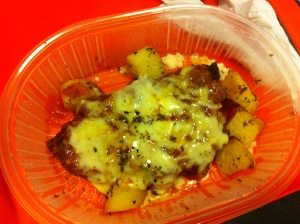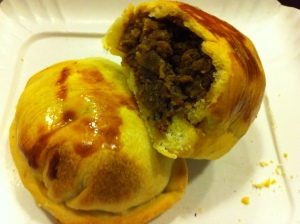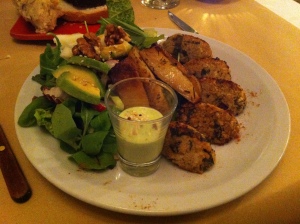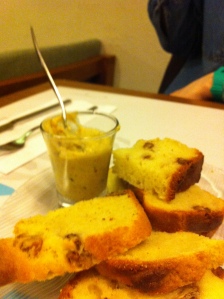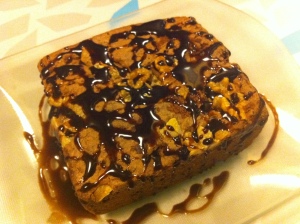We have been very fortunate to do a lot of work exchanges whilst we’ve been travelling, by which I mean we do a few hours work in exchange for accommodation and food. Although it is so much more than that. For us it has been a way of travelling slower, meeting more local people, improving our Spanish and learning new skills, as well as the obvious goal of helping people out. And we have had a huge amount of fun, as you can see here.
The snag is the food that is on offer, and I could understand people being dubious about being understood and catered for accordingly. The good news it is no barrier to having a great experience, there are only a few little tips that should make it easier and less stressful.
1) Explain. In detail. In advance
This is so obvious I am embarrassed to write it, but at the beginning it sort of slipped my mind in the excitement of searching through the incredible opportunities that were on offer. We arrived at one couple’s house geared up to teach them English, but had completely neglected to tell them I had any dietary requirements. Luckily, they were the nicest people in the world, and pretty aware of what being a coeliac meant, so we had a lovely week eating safe, delicious meals and I made them a lot of gluten free desserts to say thank you! Generally you have to give people a window to say if they can’t accommodate you (for example in a hotel, if you will be eating the same as the guests, it may be to hard for them to change everything for you). And also, if you discuss what you can and can’t eat in advance, you will feel a lot more comfortable rocking up at their home or business for a while.
2) Don’t assume the food you’re given is gluten free
Sadly, whilst explaining is a good start, people forget, or get confused, or just plain don’t think. It doesn’t make them evil, just human. So yes, I have been served breaded chicken (covered in sauce-sneaky), beef bourginon, bechamel sauce and so much bread. I like to get involved with the cooking (because I enjoy it anyway thankfully) so then there’s more control.
3) Don’t be afraid to say you can’t eat something
Following on from point 2, if you do get something questionable, don’t panic and eat it anyway or just starve; explain why you can’t have it. You may be worried about an awkward moment, but usually people are very understanding and if anything just feel sorry to have given you food you can’t eat.
4) Learn how to explain your diet in the native language of the country you are in
You don’t need to be fluent, but this is so useful. Even very good speakers of English might be confused when you start explaining in detail about your diet. They may never have spoken or thought much about it in their own language, so in English it is even less likely. If you don’t feel confident with this, then there are great coeliac language cards available on the internet that you can print and carry with you, such as these.
5) Be prepared to feel a bit sad
Lots of the places we stayed at my boyfriend could eat great food made with produce from the farm we were on, or exciting local dishes, or delicious home baked treats. The number of times I could do the same has been considerably lower. Sometimes it is hard when you are used to cooking quite well for yourself to have quite plain food, especially when everyone else I’d tucking in to something much better. But I just remind myself that it’s only food; I’m healthy, in good company and in an amazing place. It is worth the sacrifice.
6) Bring snacks!
This follows on from above again really; this seems to be considered an additional food and as such people don’t tend to provide a gluten free replacement. We stayed at one farm with a really nice couple running it, and every ten minutes they would bring around cookies for the workers and despite them catering for me really well at all other times, I never had anything. And I wanted a snack too! So I take my own. Sometimes this is more important than others. At a remote farm that was struggling to make ends meet, most people were filling up on bread and there was no money for an alternative for me. Having my own nibbles meant I wasn’t hungry and no one felt bad.
7) Opt for a host that doesn’t provide food
Plenty of hosts, on both Workaway and WWOOF lists, will take people to work less hours and only receive accommodation. Or you can contact people and ask if this would be possible. Great experience, compete security!
What I’m basically saying is go for it! You will have an amazing experience and, in all likelihood, no food based problems.
Here are the websites for the organisations I have talked about:
http://www.workaway.info
http://www.wwoofchile.cl
http://www.wwoofargentina.com
